The interior of the M9 of Wanjie has been officially revealed. As the most important new car of the year, how will the M9 of Wanjie perform? It is said that the order performance is very good. It took 48 months for Ideal to deliver 600,000 vehicles, how do other new forces feel? BMW’s L3 autonomous driving license has been approved in Shanghai, and it can now be expanded to the level of L3 on the new 5 Series. What other hot topics on Weibo are you paying attention to? Let’s review the hot topics on Weibo last week together.

Event review: Just now, Yu Chengdong announced on his personal Weibo the release date of the Huawei M9, stating that it will be launched on December 26th and also officially revealed the interior of the new car.
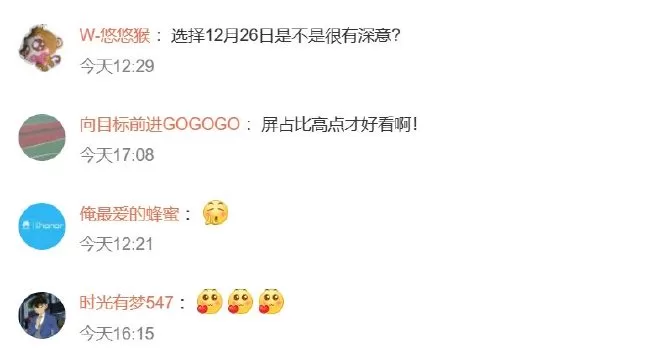
Being far ahead must be reflected in all aspects. As the heavyweight new car at the end of the year, the interior of the Wanjie M9 brings more technological atmosphere. With up to 10 screens, it has a futuristic visual sense. At the same time, Yu Chengdong released a video of the interior of the Wanjie M9, revealing that it is equipped with six equally weighted first-class seats and a triple screen. In the video, Yu Chengdong also revealed that the Wanjie M9 is equipped with in-car black technology such as projection giant screens and starry sky scattering bodies.

Yu Chengdong said that the Wanjie M9 is a leading-edge full-size flagship SUV. Not only does it bring the best Huawei smart car technology, but it also achieves a flat floor like an MPV for the first time, with six equally comfortable first-class cabin experience seats. With the blessing of the Huawei “ceiling-level” HarmonyOS cabin, the innovative triple screen combined with the rear intelligent screen system makes it easy to achieve multi-person multi-screen interaction, bringing a disruptive cabin experience. Full-size, fully intelligent, and fully scene-oriented, the Wanjie M9 will redefine smart cars! More “black technology” will be unveiled at the press conference.
As the flagship SUV of the Wanjie brand, the current pre-sale price of the Wanjie M9 is 500,000 to 600,000 yuan (84310$). Yu Chengdong once said it “will redefine the best smart SUV under 1 million yuan.” According to the Ministry of Industry and Information Technology’s “Catalog of New Energy Vehicle Models Exempt from Vehicle Purchase Tax,” the Wanjie M9 will be available in pure electric and extended range models. The Wanjie M9 EV model has a pure electric range of at least 630km, while the extended range model has a pure electric range of 175km, matched with a 1.5L turbocharged range extender, with a fuel consumption of 6.9 liters per 100 kilometers. According to Huawei’s official Weibo on November 28th, the pre-orders for the Wanjie M9 have exceeded 33,000 units. #IdealCar’s 600,000th delivery# Views: 130,000

On December 14th, Ideal Car announced the completion of the 600,000th user delivery at the Beijing Shunyi Delivery Center. The delivered vehicle is the Ideal L9, a six-seat flagship SUV for families. Netizens are discussing this news.
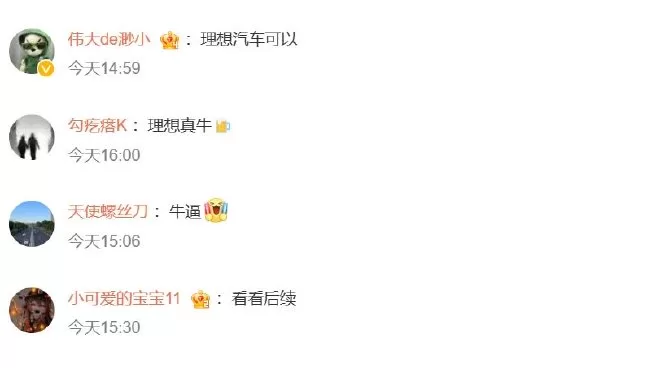
“Martial arts under heaven, only speed does not break”, perhaps can be used to describe the ideal delivery. When others are racking their brains to improve delivery, Ideal took 48 months to set a new delivery record once again. It is also the first Chinese new energy vehicle company to achieve 600,000 deliveries. Prior to this, Ideal announced in a post that it sold 41,800 vehicles in November, achieving the 2023 sales target of 300,000 vehicles ahead of schedule, and aiming to sell 50,000 vehicles in December. In November, Ideal delivered 41,030 new vehicles, a year-on-year increase of 172.9%. Among them, Ideal L9 sold 12,200 vehicles, Ideal L8 sold 12,700 vehicles, and Ideal L7 sold 16,900 vehicles. As of November 30, 2023, Ideal has delivered a total of 325,677 vehicles for the year. The cumulative delivery volume of the three models, Ideal L9, Ideal L8, and Ideal L7, has all exceeded 100,000 vehicles. And next, how will Ideal’s first MPV model MEGA perform, is also very much anticipated.

During a media briefing on December 14, NIO founder Li Bin urged all car companies to consider which car is suitable for a battery swap version, with chassis modification costing only one or two million yuan. “Selling 1000 more cars will make it back,” he said.

Li Bin reiterated the importance of NIO’s battery swapping system. He said that the energy system that can be charged, swapped, and upgraded is NIO’s moat. The cost of building a swapping station is not high, and the station can also participate in energy storage business in some areas. From this perspective, the swapping business is not a burden for NIO. Regarding the opening of the swapping service to car companies such as Geely and Changan, Li Bin said that NIO has been considering opening up since the first day of operating the swapping business. NIO is also continuing to expand cooperation with other car companies, “there are many on the road now, just signed an agreement this morning.” The specific car company was not disclosed. NIO’s “chargeable, swappable, and upgradable” service system creates the best charging experience for private car users in the industry, and cooperation with other car companies is complementary in terms of strategic recognition and sharing of open resources. Looking further ahead, it can accelerate the standardization of swapping technology and the scale of swapping networks, helping the automotive industry to transition to low carbon.

BMW Group’s vehicle equipped with L3 level autonomous driving function officially obtained the license for high-speed autonomous driving testing on the highways in Shanghai. In the future, BMW will conduct L3 high-speed highway autonomous driving road tests in designated areas under the supervision and guidance of the Shanghai municipal government.

Facing the increasingly hot high-level intelligent driving, domestic new forces such as Xiaopeng, Ideal, and Huawei are not to be outdone. While luxury brands like BMW are not just standing by. Vehicles equipped with L3 level autonomous driving function will soon be available, and the new 5 Series already has the capability to expand to L3 autonomous driving. In the future, BMW will conduct L3 high-speed road autonomous driving road tests in designated areas under the supervision and guidance of the Shanghai Municipal Government. The BMW Group’s L3 level autonomous driving has become a product that complies with the UN ECE R157 ALKS regulations and has obtained high-speed road testing in China. The upcoming domestic new BMW 5 Series long-wheelbase version already has the capability to expand to L3 autonomous driving.
It won’t be long before it can be experienced in the new 5 Series. In fact, the BMW Group’s L3 level autonomous driving already has a very mature and complete research and development system. The L3 level autonomous driving technology suite can integrate more high-performance sensors, such as a new laser radar system, and correlate all sensor information with long-range radar and front camera data to establish a complete environmental model for L3 autonomous driving vehicles. The laser radar carried by BMW’s L3 level autonomous driving, combined with an 8 million pixel front camera, can detect pedestrians, vehicles, traffic signs, and other objects in the environment from a distance, providing comprehensive protection for L3 level autonomous driving.
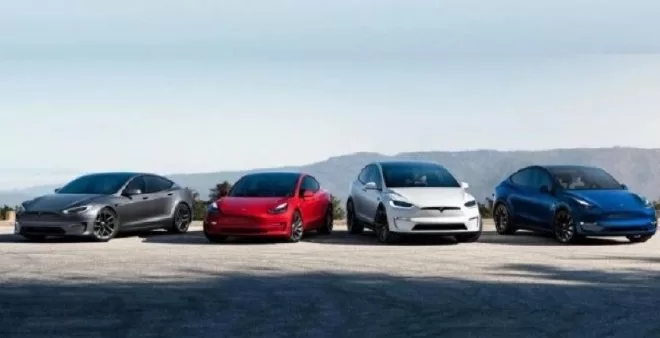
On December 14th, according to the website of the National Highway Traffic Safety Administration, Tesla announced a recall of over 2.03 million vehicles due to the insufficient capability of the automatic driving control system to prevent misoperation. The recall affects Model S from 2012 to 2023, Model X from 2016 to 2023, Model 3 from 2017 to 2023, and Model Y from 2020 to 2023. This recall only affects vehicles in the United States and Canada.

The National Highway Traffic Safety Administration announced the discovery of a defect in Tesla’s automatic driving safety system after an investigation. Tesla responded by disagreeing with the agency’s engineering analysis of the automatic steering assist function, but agreed to voluntarily recall affected vehicles and provide free software updates. A spokesperson for the National Highway Traffic Safety Administration stated that while automated technology has great potential to improve safety, responsible application is essential. The investigation is ongoing to monitor the effectiveness of Tesla’s subsequent measures. Although the recall quantity is not low, the issue can be resolved through OTA upgrades, so the overall recall cost is not high.
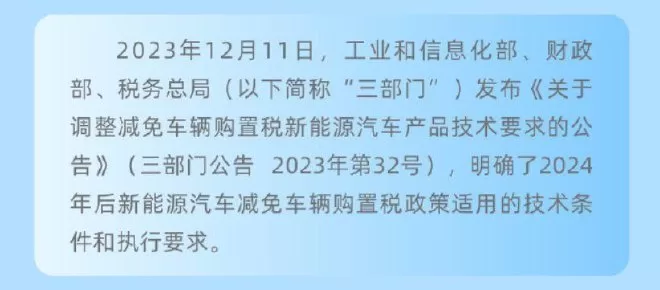
On December 11th, the Ministry of Industry and Information Technology and two other departments issued a notice regarding the adjustment of the technical requirements for the tax reduction and exemption for the purchase of new energy vehicles.
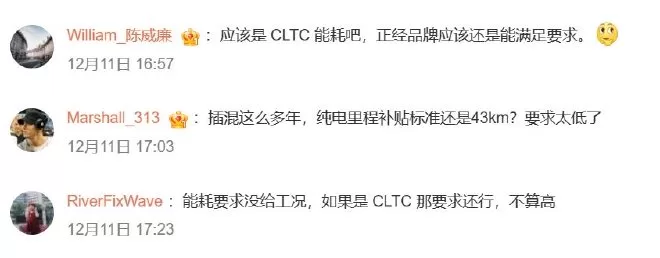
To understand this announcement in one sentence, the core information is that the existing technical requirements have been appropriately increased, new low-temperature mileage decay technical requirements have been added, and the relevant requirements for electric mode models have been clarified. At the same time, companies applying for the tax exemption must provide proof of their ability to provide battery replacement services. The announcement states that the period from January 1, 2024 to May 31, 2024 is a transition period. From January 1, 2024, the models that entered the “Catalog of New Energy Vehicles Exempt from Vehicle Purchase Tax” before December 31, 2023 and are still valid will automatically be transferred to the “Catalog of New Energy Vehicles Exempt from Vehicle Purchase Tax.”
Relevant models must promptly upload the tax exemption and electric mode identification, and supplement corresponding supporting materials for electric mode models and fuel cell models according to the requirements of the announcement. From June 1, 2024, models that do not meet the technical requirements of the announcement will be removed from the “Catalog of New Energy Vehicles Exempt from Vehicle Purchase Tax.” Relevant models need to complete the policy transition compliance work within the transition period. The relevant person in charge of the Ministry of Industry and Information Technology stated that the adjusted indicators in the announcement fully reference the implemented policies such as new energy vehicle purchase subsidies, double points, and fuel cell vehicle demonstration applications, while also providing a transition period.
From the perspective of industry impact, this is beneficial for stabilizing the automobile market, guiding technological progress and energy-saving consumption, and guiding companies to ensure product safety. From the perspective of industry development, the “Technical Requirements Announcement” is expected to have three impacts: First, it is conducive to guiding technological progress. Taking into account technological progress, standard updates, and other factors, the requirements for mature technologies that are already widely used have been moderately increased, and support has been given to new technologies and new models such as low-temperature decay and electric mode, which is beneficial for improving product technology and promoting model innovation. Second, it is conducive to guiding energy-saving consumption.
In recent years, the rapid increase in the average curb weight of vehicles has brought considerable pressure to achieve industry energy consumption targets. The “Technical Requirements Announcement” has moderately tightened the requirements for electricity consumption and fuel consumption, further guiding energy-saving consumption. Third, it is conducive to guiding companies to ensure product safety. Clear requirements for product quality assurance, platform construction, and other safety management, timely control of models involved in safety accidents, are beneficial for guiding companies to ensure the safety of new energy vehicle use.

The Ministry of Industry and Information Technology recently released a new energy vehicle model catalog exempt from vehicle purchase tax, including the Xiaomi SU7. According to the announcement, the two battery packs are 73.6kWh and 101kWh respectively.
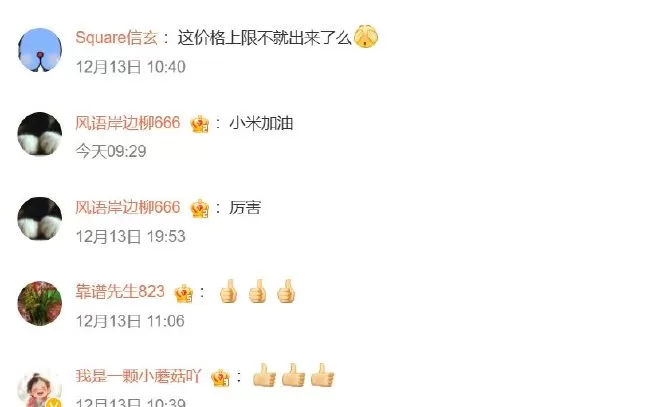
The Xiaomi SU7 has been added to the list of vehicles exempt from purchase tax, bringing it closer to its official debut. It seems that Xiaomi’s “big dish” prepared for everyone still needs a little more patience. According to the information in the catalog, the Xiaomi SU7 will offer four different ranges: 628km, 668km, 750km, and 800km, with two battery options: 73.6kWh and 101kWh. The 73.6kWh battery pack has a total mass of 579kg and a curb weight of 1980kg, while the 101kWh battery pack has a total mass of 645.8kg and a curb weight of 2205kg. The former is compatible with the 400V platform, while the latter is for the 800V high-voltage platform. According to data from the Ministry of Industry and Information Technology, the Xiaomi SU7 has dimensions of 4997mm*1963mm*1455mm and a wheelbase of 3000mm. Additionally, the Xiaomi SU7 will be equipped with large sports wheels and a high-performance braking system.

The information about the car models that should be known has been roughly covered, and the rest depends on the performance of the Xiaomi car team. In such a competitive environment, is the Xiaomi car team fully prepared? This is of more concern, including sales, delivery, and after-sales service. Xiaomi must also envy the ideal delivery performance. Although product strength plays a role, the team’s efforts and orderly operation are equally important. Only when the team plays its due role can it create stronger combat effectiveness and occupy a place in the market competition. In the future, the car business will be an independent part of the Xiaomi system, and the development of Xiaomi cars is equally important for the overall Xiaomi. #Huawei’s first sedan, the Zhijie S7, has arrived in stores# Read count: 15.49 million

It is reported that the Zhijie S7 has appeared in many Huawei experience stores nationwide. Interested netizens can inquire at local stores and experience the latest “far ahead” products in store for the first time. The Zhijie S7 was launched on November 28th with a price range of 249,800 to 349,800 yuan (49150$).
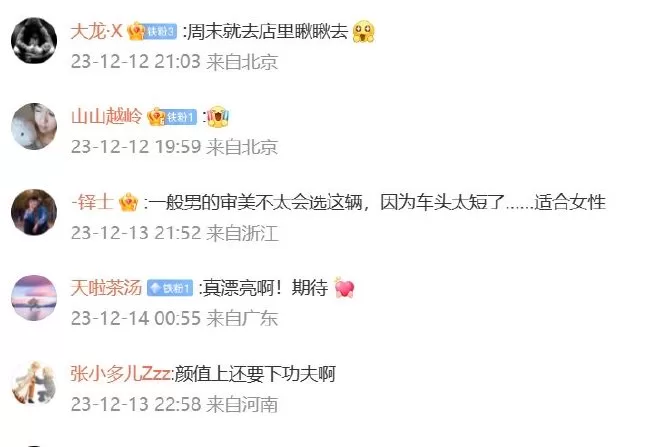
It is not surprising that the Huawei Smart Selection S7 has sparked heated discussion, as it is not only the first car jointly developed by Huawei and Chery, but also the first sedan in Huawei’s smart car business. Huawei is responsible for the product definition, development, quality control, as well as retail, delivery, and later OTA after landing. Moreover, Huawei has put a lot of effort into the Huawei Smart Selection S7, even being a bit “biased,” with the most powerful motor, the best radar, and the strongest chassis all being first installed! In terms of software, HarmonyOS 4.0 for the car is also a debut. Huawei has left nothing to chance with the Smart Selection S7. In today’s market competition, smart driving is the focus. As power performance gradually takes a back seat, how the assisted driving performs, and the comfort performance have become the focus of attention.
In this respect, Huawei can be said to have a very strong advantage. For example, the Smart Selection S7 debuted HarmonyOS 4.0 smart cockpit, Huawei ADS 2.0 advanced smart driving. In terms of interconnected experience, smart car system, and advanced smart driving, the Smart Selection S7 is at the T0 level in China. For friends who want to experience the ceiling of the car system and smart driving industry, the Smart Selection S7 is currently the best choice. The wheelbase of the Smart Selection S7 is 2950mm, positioning it as a mid-to-large sedan. The rear seats are designed in three zones, and the interior space utilization rate is as high as 88%, even surpassing the Mercedes-Benz E300L and the Tesla Model S. This is also a major advantage that cannot be ignored.
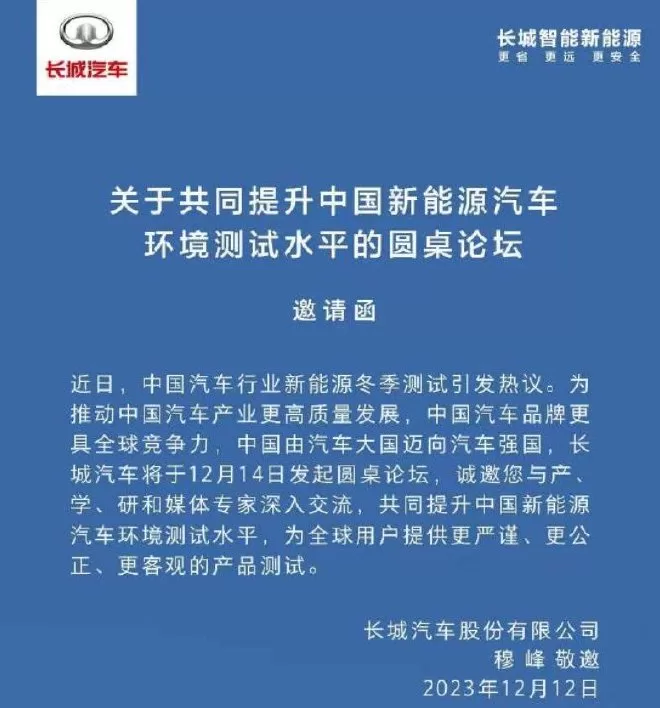
Recently, the winter testing of new energy vehicles in the automotive industry has sparked heated discussions, with many executives from car companies such as AITO, Great Wall, and Geely directly questioning the winter testing process, standards, and results of the car emperor on Weibo.
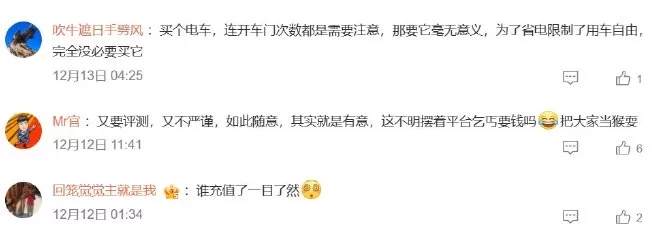
Car reviews or tests may seem easy, but they are actually very rigorous and should not be complicated by any other factors. Absolute objectivity may not be achievable, but at least we should be able to ask ourselves and have a clear conscience. New energy vehicles and traditional fuel vehicles have significant differences in winter use, which is why the media is eager to test new energy vehicles in winter. The characteristics of the battery cause electric vehicles to experience significant shrinkage in winter, but with technological advancements, this situation should gradually improve, and that’s what we’re testing. Your range, battery thermal management, and whether other components can withstand the test in low-temperature environments are all being watched by consumers. As influential media testers, once the results are announced, they will naturally have a big impact on specific car models.
The manufacturers are not only dissatisfied with the results of the media tests, but also with the testing process and specific operations. It’s easy to understand that a new energy vehicle that comes off the assembly line, whether pure electric, plug-in hybrid, or extended range, has undergone various environmental tests, including low-temperature testing, before finally obtaining the range and fuel consumption data. If manufacturers dare to falsify or exaggerate data, then there can be no talk of fairness, and the Chinese automotive industry would be digging its own grave. In other words, one company may do this, but will everyone do the same?
When looking at the problem, it’s important to see the point. Car companies are not to be underestimated, and in front of experts, these issues are as clear as day. This is also the reason for the situation mentioned earlier. Therefore, overall, it’s easy to understand the initiative proposed by Great Wall Motors to jointly establish new energy testing standards. So, if multiple car reviews do not strictly adhere to uniform standards for each vehicle, or if many subjective factors are involved in the test results, then the results will definitely not be objective enough.